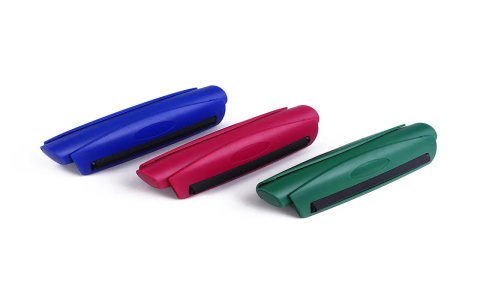The term “electronic cigarette rolling machine” typically refers to tools designed to assist in the creation of heating coils for rebuildable atomizers (RBAs), a component of some electronic cigarettes. These devices automate or simplify the process of wrapping wire into a consistent coil.
Core Functionality and Purpose
The primary purpose of such a tool, often known as a coil jig or coil winder, is to enable users to produce uniform and precisely wound coils. These coils are crucial for the vaporization of e-liquid in rebuildable dripping atomizers (RDAs), rebuildable tank atomizers (RTAs), and rebuildable dripping tank atomizers (RDTAs).

Key Advantages:
- Consistency: Ensures coils have uniform wraps and diameter, leading to predictable performance and heating.
- Ease of Use: Simplifies the often-intricate process of manual coil wrapping, making it accessible even for beginners.
- Speed: Allows for quicker production of multiple coils compared to entirely manual methods.
- Precision: Helps achieve specific resistances and coil structures more accurately by maintaining tension and spacing.
Types of Coil Building Tools
Several types of tools facilitate coil building for electronic cigarettes:
- Manual Coil Jigs: These are the most common and generally consist of a central rod (or a set of rods with varying diameters) and a coiling cap or guide system. The user manually wraps the resistance wire around the rod. Popular styles include Kuro-type coilers and simple stepped rod jigs.
- Coil Winding Kits: These are comprehensive sets that typically include one or more manual jigs, along with essential accessories such as wire cutters, ceramic-tipped tweezers (for non-conductive adjustments while dry-firing the coil), small scissors for wicking material, and sometimes an ohmmeter and coil alignment tools.
- Automated or Powered Coil Winders: Less prevalent for individual consumer use but available, these motorized devices can wrap coils with minimal manual intervention. They offer a higher degree of precision and speed, bordering on small-scale production tools, and are often favored by enthusiasts building complex or numerous coils.
Selection Criteria
When selecting a coil building tool or kit, consider the following factors:
- Supported Coil Diameters: Ensure the tool can produce coils of the internal diameters you primarily use (e.g., 2.0mm, 2.5mm, 3.0mm, 3.5mm). Most jigs offer multiple diameter options.
- Wire Compatibility: While most jigs handle common round resistance wires (like Kanthal A1, Stainless Steel, Nichrome 80), their effectiveness with more complex or thicker wires (such as Clapton, Fused Clapton, or Alien wires) may vary.
- Build Quality and Material: Look for durable materials like stainless steel, aluminum alloy, or high-grade engineering plastics to ensure longevity and consistent performance.
- Portability and Inclusions: Determine if you need a compact, standalone tool for portability or a comprehensive kit that includes all necessary ancillary tools for a complete building experience.
Essential Practices for Coil Building
Utilizing a coil “rolling” or building tool is an integral part of constructing custom coils, but it must be complemented by safe practices. A thorough understanding of Ohm’s Law, battery safety, and correct coil installation techniques is paramount. Always test newly built coils on a reliable ohmmeter or a regulated vaping device capable of accurately reading resistance before use. This helps prevent short circuits and ensures the coil operates safely within the capabilities of your electronic cigarette and its batteries.










